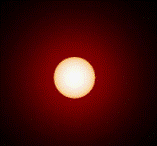Department of Physics and Astronomy: Publications and Other Research

Norman R. Simon Papers
Document Type
Article
Date of this Version
5-1-1986
Citation
THE ASTROPHYSICAL JOURNAL, 304:249-255,1986 May 1
Abstract
Eight fundamental-mode RR Lyrae models are integrated using a new code, TGRID, with dynamic zoning in the hydrogen ionization region (HIR). The models have a variety of parameters, in order to supplement an earlier group of calculations due to R. Stothers. When the light curves from these models are Fourier decomposed, it is found that the Fourier phases ϕ21 and ϕ31 agree with those from the earlier calculations but disagree with the values obtained from the observed light curves of RRab pulsators. Taken together, the past and present models cover perhaps the entire range of reasonable parameters for RR Lyrae stars and also encompass different opacities and a number of different artificial viscosity parameters. Thus the discrepancy between calculations and observations is thought to involve some basic physical or numerical aspect of the calculations. Searching the literature, we Fourier decompose a light curve from a convective model due to Stellingwerf, but find values of ϕ21 and ϕ31 similar to those for the radiative models. We also investigate two models published by Hill-one with a detailed treatment of radiative transfer, and another with both detailed radiative transfer and an extended atmosphere capable of treating the propagation of shock waves. The latter model produces a ϕ21 and ϕ31 in the middle of the range of observed values. We put forward some further evidence favoring the idea that the theoretical-observational disagreement may be due to the use of the diffusion approximation and the neglect of atmospheric shocks, and we close with a discussion of this problem.


Comments
Copyright 1986 The American Astronomical Society. All rights reserved.